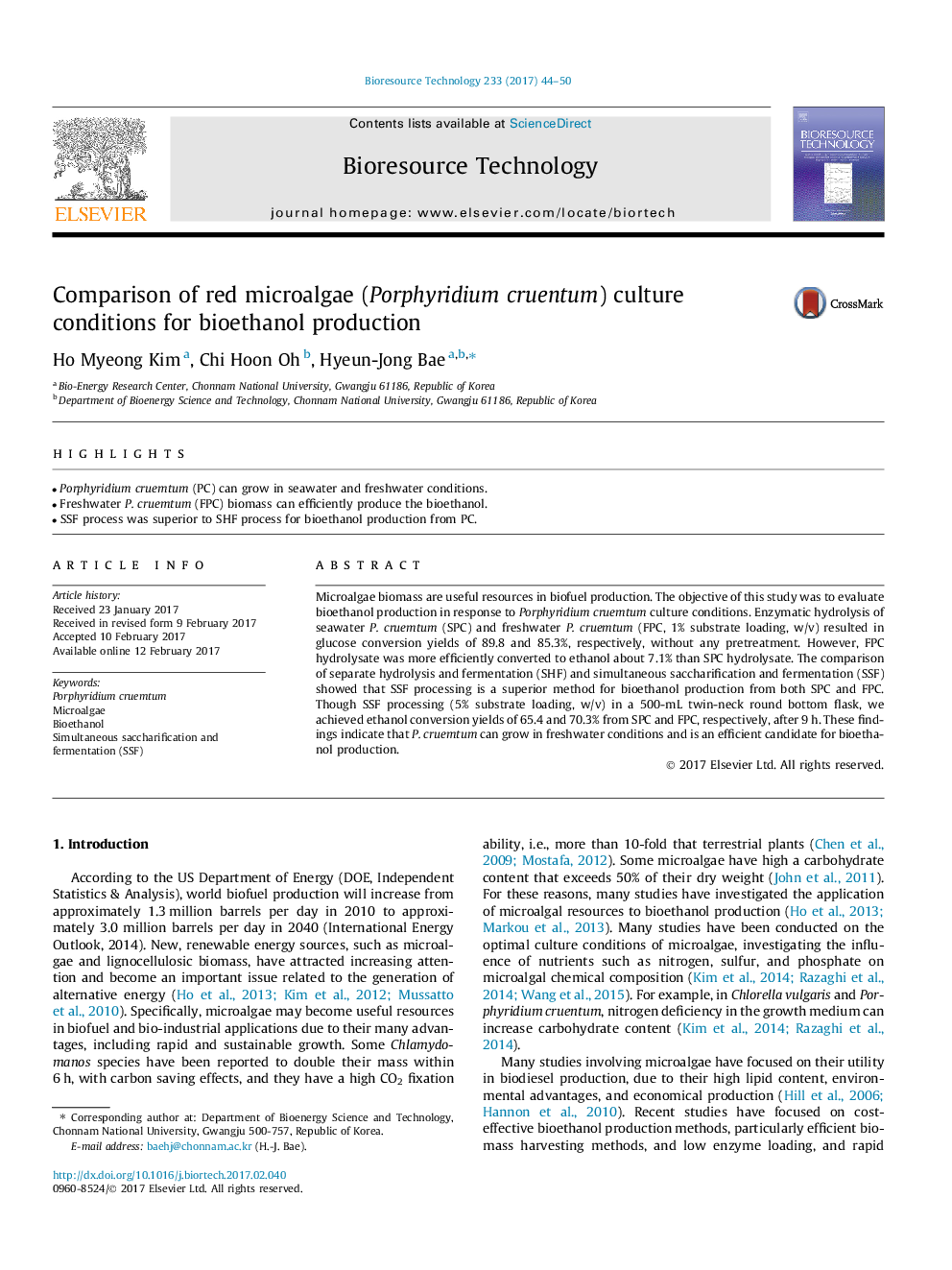| Article ID | Journal | Published Year | Pages | File Type |
|---|---|---|---|---|
| 4997503 | Bioresource Technology | 2017 | 7 Pages |
â¢Porphyridium cruemtum (PC) can grow in seawater and freshwater conditions.â¢Freshwater P. cruemtum (FPC) biomass can efficiently produce the bioethanol.â¢SSF process was superior to SHF process for bioethanol production from PC.
Microalgae biomass are useful resources in biofuel production. The objective of this study was to evaluate bioethanol production in response to Porphyridium cruemtum culture conditions. Enzymatic hydrolysis of seawater P. cruemtum (SPC) and freshwater P. cruemtum (FPC, 1% substrate loading, w/v) resulted in glucose conversion yields of 89.8 and 85.3%, respectively, without any pretreatment. However, FPC hydrolysate was more efficiently converted to ethanol about 7.1% than SPC hydrolysate. The comparison of separate hydrolysis and fermentation (SHF) and simultaneous saccharification and fermentation (SSF) showed that SSF processing is a superior method for bioethanol production from both SPC and FPC. Though SSF processing (5% substrate loading, w/v) in a 500-mL twin-neck round bottom flask, we achieved ethanol conversion yields of 65.4 and 70.3% from SPC and FPC, respectively, after 9Â h. These findings indicate that P. cruemtum can grow in freshwater conditions and is an efficient candidate for bioethanol production.
